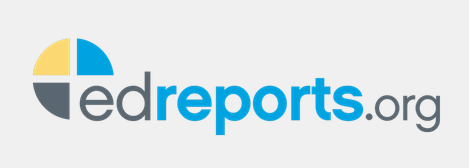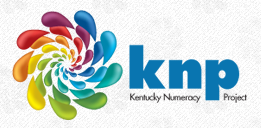We stumbled across WatchKnowLearn.org and wanted to share this resource with you. WatchKnowLearn has indexed approximately 50,000 educational videos,
placing them into a directory of over 5,000 categories. The videos are
available without any registration or fees to teachers in the classroom,
as well as parents and students at home 24/7. WatchKnowLearn provides videos from several sources including: Teacher Tube, Curriki, brightstorm, National Geographic, Vimeo, Hulu, and more.
Monday, December 15, 2014
Ed Reports
EdReports.org, a new, independent nonprofit designed to improve K-12 education in the United States, will launch in winter 2014. EdReports.org will provide free, web-based reviews of instructional materials series focusing on alignment to the Common Core and other indicators of high quality as recommended by educators, including usability, teacher support and differentiation. These Consumer Reports-style reviews will highlight those instructional materials that are aligned to the higher standards states have adopted so that teachers, principals and district and state officials charged with purchasing materials can make more informed choices.
EdReports.org will first review K-8 mathematics materials. Subsequent reviews will cover secondary math and K-12 English Language Arts.
Educators and instructional experts from across the country are driving their materials-evaluation process. All reviews will be conducted by expert educators.
Currently, EdReports is seeking talented K-12 teachers, principals, instructional coaches, district and state staff, and ELA and mathematics content experts across the country to serve as Content Reviewers. Reviewers work in small clusters (or teams) with fellow educators to receive intensive training on the EdReports.org review criteria, conduct reviews of both print and digital yearlong instructional materials and collect evidence to support EdReports.org ratings. Reviewers will collaborate with talented ELA and mathematics educators and experts from around the country to conduct reviews.
EdReports.org has already started reviewing grades K-8 mathematics but ongoing reviews of 9-12 mathematics and K-12 ELA will begin in Spring 2015 and last approximately 3-4 months.
Check out the website for more information.
Tuesday, December 9, 2014
More NIXEREST
Differentiated Kindergarten Goal Setting
How to Ask and Answer Questions
Math Vocabulary
Anchor Charts for Math
Science
Social Studies
Monday, December 1, 2014
Why Is Math Different Now? - Video to Share with Parents
Dr. Shah is the owner and founder of Math Plus Academy (mathplusacademy.com) an academic enrichment program with two locations in Columbus, Ohio. Math Plus Academy offers class in math, robotics, programming and chess for kids from KG to 9th grade. Math Plus Academy is on a mission to show kids the joy of mathematics and science.
Thanks for sharing, Dr. Kelli Rogers!
Nixerest 2014
RECESS EXPECTATIONS
As students leave the building for recess, they are reminded of playground expectations. Students made beautiful, informative posters to hang by the outside doors to help fellow students stay on the right track during recess.
BUILDING CLASSROOM COMMUNITY
Isn't this a great poster made by one of our classroom teachers? We LOVE that all expectations are written in a positive manner.
LOVE THIS CHALKBOARD ON THE DOOR FOR SPECIAL NOTES
MATHEMATICAL PRACTICES POSTERS AND TODAY'S MATH FOCUS
VERY VISIBLE TO STUDENTS
YES, WE STILL TEACH SOCIAL STUDIES.
YOUR CLASS PICTURE GOES HERE...
WE HAVE THE CRAFTIEST TEACHERS!!!
GUIDED MATH SMALL GROUPS - BUILD
After last summer's book study, Guided Math in Action K-5 by Dr. Nicki Newton, we have a number of teachers who are implementing guided math in their classrooms. BUILD is one way to organize what the other students are doing while the teacher meets with a small group.
Here's what the other students are working on as the teacher meets with small groups in math:
MATH ANCHOR CHARTS
Anchor Charts are an important part of the learning process. It is important to note that anchor charts are created with the students during class time. Complete anchor charts should not be made prior to the learning or reused from class to class or year to year. The collaboration and creation of the charts with the students is an extremely important part of the learning that takes place in the classroom.
The anchor charts then become a resource for all the students in the classroom. Anchor charts should be neat, colorful and easily seen anywhere in the classroom. They are placed around the room for the students to refer to during their independent work time. Some teachers take pictures of their anchor charts and house the pictures in a notebook. Students use the notebook as a resource. Using the charts is not cheating, but rather a way to build students' confidence and help the students be problem solvers and thinkers.
Friday, November 21, 2014
What the Heck is a Rekenrek?
A Rekenrek Is a Math Tool for K-2 Students

Rekenreks were introduced at the Star Summit earlier this month. Rekenreks are a new math tool many teachers had never heard of before. Our teachers loved them, so we wanted to share this amazing math tool with all of you.
A Rekenrek combines features of the number line, counters, and base-10 models. It is made of two strings of ten beads each, strategically broken into two groups: five red beads, and five white beads. With this math tool, children begin to think in groups of five and ten.
Rekenreks can also be differentiated to accommodate children who may be either more or less advanced. One string of five beads or ten beads may be easily created, just as a teacher may wish to use two strings of twenty beads each.
REKENREK VIDEOS:
REKENREK RESOURCES:
by Barbara Blanke includes:
- What is a Rekenrek?
- 6 Rekenrek Activities
by Jeffrey Frykholm includes:
- About the Rekenrek
- A Rationale for the Rekenrek
- 10 Rekenrek Activities
Monday, November 17, 2014
Sharing from Star Summit
Meredith Carrisalez, 5th grade teacher at Summit, shared a resource she received from Star Summit. The workshop she attended was "Going Deeper in Reader's and Writer's Workshop" by Jennifer Ritter from Republic. During the workshop, teachers were able to create example writing folders (writing offices) for student desks. Here's what they look like completed:
We linked the resources she used:
Jill Aubuchon, 5th grade teacher at Summit, shared how she used the math vocabulary sort from Mathtastic! Grades 3-5. You can find the vocabulary words in a FREE Teachers Pay Teachers download from Kristine Nannini HERE.
Don't forget to share YOUR favorite resources from Star Summit with us, too!
We linked the resources she used:
Jill Aubuchon, 5th grade teacher at Summit, shared how she used the math vocabulary sort from Mathtastic! Grades 3-5. You can find the vocabulary words in a FREE Teachers Pay Teachers download from Kristine Nannini HERE.
Don't forget to share YOUR favorite resources from Star Summit with us, too!
Tuesday, November 11, 2014
Share Your Favorites from Star Summit!
Star Summit is a wonderful opportunity for us to collaborate and share with other districts in our area. There were so many session options, there are sure to be some sessions you had to miss that you really wanted to attend. This is where we will continue the collaboration that began at Star Summit.
One of the sessions we were able to attend was Paige Thompson's "There's No Crying in Math!". Paige is a Special Education teacher in Republic and introduced us to the Kentucky Numeracy Project. You must register for this FREE site and it takes a little time for you to get approved, but it offers resources like webinars and an intervention guide. We are excited to check it out!
Share favorite resources or sites you learned about from Star Summit by responding to this post.
Wednesday, November 5, 2014
Monday, October 27, 2014
Well Organized Website for Common Core Math
Common Core Math
Beth Sandbothe shared this incredible math website with us from Howard County Public School System. The school district has a page organized for each grade level for Common Core Math. Each 1st-6th grade website includes:
- Planning for Mathematics
- Assessment Tasks by Standard
- Supporting Mathematics
The Kindergarten page is set-up a little differently than all the other grade levels, but it is also full of kindergarten math resources. Take just a minute to check out your grade level page. We promise it will be worth your time.
Here are the links for each grade level:
Thanks for sharing, Beth!
Friday, October 24, 2014
Standards of Mathematical Practice - One Practice at a Time
Mathematical Practice #8
Look for and express regularity in repeated reasoning.
What should students be able to do?
- See repeated calculations and look for generalizations and shortcuts.
- See the over all process of the problem and still attend to the details.
- Understand the broader application of patterns and see the structure in similar situations.
- Continually evaluate the reasonableness of their intermediate results.
Questions the Teacher Can Ask to Develop Mathematical Thinking:
- Can you explain how this strategy works in other situations?
- Is this always true, sometimes true or never true?
- How would we prove that...?
- What do you notice about...?
- What is happening in this situation?
- What would happen if...?
- Is there a mathematical rule for...?
- What predictions or generalizations can this pattern support?
- What mathematical consistencies do you notice?
Tuesday, October 21, 2014
Real Life Math Fails
I don't know about you, but when I go to a place of business and the person can't give me correct change, I get frustrated! I don't want to put my students out into the world without real-world skills.
Using real-life examples of math fails will help increase student interest and get them thinking when they're out there in the real world. Simply put math fails up on the Smart Board and ask students to explain the problem. Take these for example:
Using real-life examples of math fails will help increase student interest and get them thinking when they're out there in the real world. Simply put math fails up on the Smart Board and ask students to explain the problem. Take these for example:
I'll take one. And then another one. But not two, please. :-)
For the calorie counters out there, you might think twice...
How many nuggets do YOU see?
We all need a little swagger, right? How much are you willing to pay for it?
Don't be fooled during your shopping trip on Black Friday!
Not 50%? Huh...
Hey, big tipper!
What is it made of?
Every dollar counts!
That really is stealing, isn't it?
Subscribe to:
Comments (Atom)


















































